This course explores concepts, principles, history and practice of educational equity and inequity, as well as, their function in the United States. Issues addressed are: ethnicity and race, socioeconomic status, gender and other inequalities within the society and the impact of those inequalities on the achievement gap among American K-12 students. The major goal of this course is to facilitate the journey to help students become a culturally responsive professional. (Eastern Washington University, 2017)
Students in the course connect research and theories, such as out-of-school knowledge and literacies (Gutierrez, 2008; Martinez-Roldan & Franquiz, 2009; Moll, Amanti, Neff, & Gonzalez, 1992), inequality in schools (Kozol, 1991), poverty (Jensen, n.d.), the school-to-prison pipeline (Caraballa, 2016; Christle, Jolivette, & Nelson, 2005; Wald & Losen, 2003), Pedagogy of the Oppressed (Freire, 1970), and culturally responsive pedagogy (Brooks & Brown, 2012; Gay, 2010) to a YA book club text. I chose YA texts to aid future teachers in visualizing who their future students may be and how inequalities might impact their future students’ education. The book club assignment was the culminating assignment for the course and included an online discussion, in class discussion, and a written paper reflection.
Teachers must give serious thought to the books they choose. My advice here is: know what you want students to analyze, push against, and to value, and carefully select texts that will allow them as individuals, and your class as a community, to approach those ideals. (p. 24)
Following Cook’s suggestions, the following YA texts were chosen: All American Boys (Reynolds & Kiely, 2015), Gabi, A Girl in Pieces (Quintero, 2014), The Absolutely True Diary of a Part-Time Indian (Alexie, 2009), Girlchild: A Novel (Hassman, 2012), and Out of the Pocket (Konigsberg, 2008).
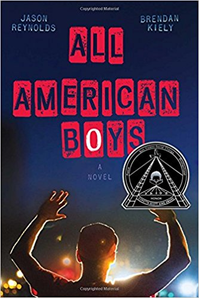
In All American Boys, while Rashad is in the hospital, news of the beating reaches school. The teachers and students must decide how they are going to deal with the situation. This book illustrates the way that events outside of school impact in-school activities and teaching. Not only do Rashad and Quinn attend the same high school, but the younger brother of the cop also attends the same school—and is Quinn’s best friend. At school, some teachers choose to ignore the situation completely, such as the basketball coach who tells students to leave it off the court, but that is really difficult when Quinn, Guzzo (Officer Paul Galluzzo’s sibling), along with several of Rashad’s best friends are all on the team. Other teachers struggle with their conscience while trying to meet the needs of all students. Students divide along racial lines, supporting either Rashad or Paul, the cop.
This book complicates many issues, demonstrating that it’s not always right or wrong, black or white, family or friend. Future teachers who read All American Boys in this course consider how power and perception influenced Officer Paul Galluzzo’s decision to beat Rashad. With Rashad’s baggy pants and dark skin, Officer Galluzzo immediately concludes that Rashad was stealing when he saw Rashad leaning toward his duffle bag in the store. Along with this text, students watch a video describing how African-American parents teach their children, especially their sons, how to act when pulled over or stopped by a cop. The majority of the students in my classes are White and do not realize how privileged they are. I share a story of my son, Jeffrey, a nineteen year old White male, who was following our car on a recent trip from Washington to Montana. We passed a couple of state patrol vehicles after crossing into Idaho. My husband and I looked at each other and said, “Jeffrey’s going to the get pulled over. Watch.” Not five miles later, the patrols caught up to Jeffrey, flashed their lights, and pulled him over. He was a teenage driver, with a car full of teenagers, profiled by the cops. However, because of his White, privileged background, it had not even crossed his mind that he would be pulled over. He was not doing anything wrong, but because of his age, he looked “wrong” to the cops. This example demonstrates how many K-12 students in our class may feel on a daily basis due to discrimination just because of the color of their skin or their ethnicity. By reading and discussing All American Boys, my future teachers were able to imagine the experience of students who experience inequality due to discrimination by people in authority.
Reynolds and Kiely also illustrate complicated family dynamics through All American Boys. Future teachers may not realize that students’ parents may have been killed or injured in war, like Quinn’s dad. Quinn felt additional pressure from his mother and the community to be a hero like his dad. Quinn was living with his mother in a single parent household, trying to “be the man” of the house even though he was still in high school. Because of Quinn’s dad’s death in Afghanistan, Paul Galluzzo takes Quinn under his wing and acted like a father figure. This is a major influence on Quinn, and when he sees Paul beat up Rashad, Quinn cannot decide what to do even though he believes Paul was wrong. On the other hand, Rashad’s family was intact, but not without its own complications. Readers discover that Rashad’s dad and brother are at odds with each other because his brother is an activist, fighting for equality in a movement similar to the Black Lives Matter movement. Rashad’s dad is a former police officer who injured another young man while on duty, in a manner similar to Paul Galuzzo’s. Rashad’s father’s victim ended up in a wheelchair. Family issues such as these are important in the lives of our students, and future teachers’ exploration of these issues through a novel like All American Boys, in a university classroom setting, helps create more culturally responsive teachers.
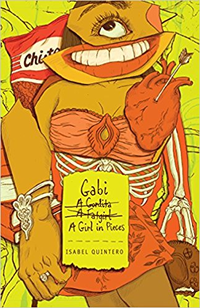
In Gabi, A Girl in Pieces, Gabi’s complicated family life may not be known to teachers at her school, and without understanding of these issues, teachers may misunderstand Gabi as a person. Future teachers can learn to consider issues beyond the classroom that affect students’ performance in class. Although Gabi is able to deal with her issues effectively, not all students are able to persevere in the face of such difficulties. First, her meth addicted dad has been on and off of drugs throughout her life. With this in mind, Gabi pretty much lives in a single-parent household. Gabi’s mother holds onto the hope that her husband will “get clean,” but despite the support of his family, he cannot and he eventually dies from his addiction. Her aunt is ultra-religious throughout the story, but Gabi eventually learns that her aunt is in love with a married man and her religious zeal is a cover for her own insecurities. All of these family issues affect Gabi, and future teachers can develop an awareness of students’ complicated home lives through the window of Gabi, A Girl in Pieces. This awareness can help future teachers to build more equity into their curriculum.
Not only is Gabi’s dad an impact on her life, but the expectations of her mother affect her, as well. Gabi struggles with not being “Mexican” enough or “American” enough. She is trying to fit in with both cultures, but feels like she does not fit into either. Her dreams of attending Berkley are impacted by her mother’s insistence that going away to college is a thing “bad girls” do. Future teachers may not realize that tensions exist between Latino and American culture. Without the tools to bridge transcultural worlds, a young Latina, like Gabi, may feel isolated and alone (Zayas, Gulbas, Fedoravicius, Cabassa, 2010); she feels like she does not fit into either culture, and pressure from teachers at school and parents at home may add to the distress she feels.
Sex and sexuality also impact the plot in Gabi, A Girl in Pieces. Cindy, Gabi’s best friend, is pregnant. Gabi feels personal tension throughout the story as she comes to terms with her own sexuality. She wants to be a good girl in the eyes of her family, but she dreams of having sex. Also, Gabi is mad at Cindy for getting pregnant by not being safe when she had sex with German, but readers (and Gabi) discover partway through the story that Cindy was raped by German. This part of the plot can help future teachers to explore and discuss attitudes about sex and gender roles in Latino culture. Both of these ideas may not come up in a K-12 classroom directly, but indirectly these attitudes may affect the way Latino students respond to situations inside and outside of class. Not only do attitudes toward sex and gender influence students as they come of age and discover themselves, Latino students may be affected by these roles through their family structure and dynamics, as well.
Gabi complains throughout the book about her weight. She feels like she is a fat girl and is unhappy with how she looks. She eventually decides to use her writing to raise body awareness: “I wanted the zine to make people think about how girls are raised to think about our bodies and who gets to decide how we think about them” (Quintero, 2015, p. 204). Later in the book, Gabi’s confidence becomes evident to readers when she says,
Then I looked myself straight in the eyes and said, ‘Gabi, get over it. You look spectacular. You look amazing, so stop your bitching or do something that makes you feel better.’ I took a deep breath and took off my shorts and shirt and stepped out on the beach like I owned that shit and didn’t give a fuck about all the skinny girls around me. After a while, I didn’t feel like an outsider and nobody made comments or even cared about what I looked like. The other think about being fat is that you spend too much damn time worrying about being fat and that takes time away from having fun. But I decided today would be different. And it was. (Quintero, 2015, p. 273)
Gabi is able to become more confident in herself throughout the story, and this occurs as she realizes her own worth. Future teachers can gain insight into students’ struggles with self-image through Gabi’s diaries.
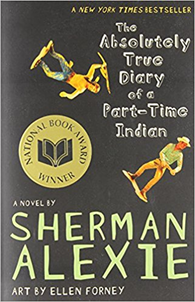
Sherman Alexie’s story addresses many issues of family and belonging in the novel The Absolutely True Diary of a Part-Time Indian. Like Gabi, in Gabi, A Girl in Pieces, the main character, Junior struggles with not being “Indian” enough because he chooses to attend the all-White school in Reardan. Junior’s life is split into two pieces, as illustrated and discussed throughout the novel. Junior’s struggle to fit in with his culture while trying to fit in at school is difficult. Junior’s friends and family on the reservation feel that Junior is trying to be better than them because he is going off the reservation for school; however, Junior knows that he must do what is best for his future. The theme of fitting into multiple cultures is a common theme in The Absolutely True Diary of a Part-Time Indian and Gabi, A Girl in Pieces. During class, we listen to the spoken word poem “Beneath Two Skies” (Hepworth, H2010). This poem discusses the problems that Myrlin Hepworth experienced growing up with a White father and Latino mother. He felt like he did not fit into either culture. Future teachers are able to connect the poem to the book club text and to the possible experiences of their future students. This activity helps to illustrate the tensions so many students feel while trying to navigate school culture and home culture or a mixed culture background. Acknowledging that many students are trying to obtain balance between cultures helps to create more equity in classrooms.
Junior’s life on the reservation is shaped by alcoholism and death. He often writes and draws about people he has loved and lost to both. For Junior, this is just part of his life; even though he does not want these things to be in his life, the circumstances of the reservation make this a reality for Junior and the others living there. The circumstances students encounter in their home lives can affect them at school. Future teachers see into Junior’s experiences and realize that Junior’s experience could be the same experience students in their classrooms may be having. Drugs, alcohol, and trauma affect students’ lives. These difficult issues are overwhelming, but in the course, future teachers are able to discuss how they could address such problems if they are encountered in their future classrooms. Suggestions include accessing community resources and making these available for students.
This book also addresses issues of poverty and fitting in. Junior compares his own clothes, bought at Kmart, to the brand name clothes of his White classmates. This tension reveals the feelings that students from low SES may feel at school, and future teachers can imagine how Junior’s feelings may be similar to those of other students from low SES who may be in their future classes. Our university is located in a town where there is very low SES and nearby, a school with one of the lowest SES rates in the State of Washington serves students. For many education students, living in poverty is a foreign concept. Reading books that deal with poverty helps create a window into life for a students in this situation. Some future teachers begin to realize that students in their future classrooms may come to school hungry or in dirty clothes, not because they do not care, but because they do not have a choice.
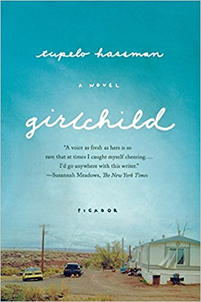
Tupelo Hassman’s novel, Girlchild, also addresses poverty. The main character, Rory, is White and lives in a trailer park outside of Reno, Nevada. Rory dreams of escaping the trailer park, and throughout her childhood, she imagines joining the Girl Scouts. She reads and rereads the Girl Scout manual, trying to gain insight, and Rory often measures her actions against the Girl Scout manual. Like Junior in The Absolutely True Diary of a Part-Time Indian, Rory dreams of escaping her poverty, of escaping the trailer park, and of moving beyond the limits of her current life. In class, we discuss connections students can make to Rory’s experience. I share my personal experience of teaching in Arizona where I taught at a school that served very low SES students. While teaching there, many parents refused to fill out FAFSA forms for their students to apply to college because the parent did not want the child to attend college. We learned that the parents relied on the income the child earned-either through their welfare check or job. If the child left to go to college, the parent feared this income would be lost. Barriers to school success such as this exist in many households, and poverty affects students in many ways that may or may not be observable to teachers. Future teachers may not realize the barriers to college and breaking the cycle of poverty. Through course discussion surrounding this text and research articles, they are able to get a clearer idea of what poverty means and how it affects students.
Rory is smart and excels at school. Her grandmother tells her that she can get out of the trailer park, but when Rory gets close to succeeding, she purposely fails because she is afraid of leaving behind her mother. An example of this occurs when Rory becomes the spelling bee champion. She is at the spelling bee, when she sees her mother in the audience and decides to misspell the word. Even at her young age, she observed that she did not fit in with the “sweater set” and fear took over. Future teachers can learn from Rory’s experience that students may not perform at their full potential due to unseen circumstances. When students perform poorly because it is not expected by their family or peers, teachers should try to discover what barriers are affecting the student. All students benefit from high expectations, and future teachers should work toward establishing high expectations for all students. Understanding students’ motivation can help teachers to be more culturally responsive.
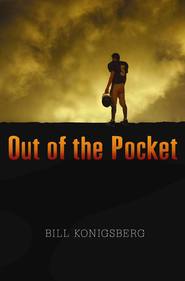
Out of the Pocket by Bill Konigsberg explores the experiences of a young man who is quarterback of the high school football team, dating one of the prettiest girls in school, and on the short list for several colleges to play football. It seems like everything is going great for Bobby Framingham, but beneath the surface, Bobby knows that he is living a lie. He is gay, but nobody knows. When they find out, his world comes tumbling down. Future teachers in my course must consider the fact that students in their future courses may be “out,” “in the closet,” or still “questioning” their sexuality. Because young adults often struggle with their identities, this source of stress can be extremely difficult.
Bobby’s struggle illustrates the strain between developing a personal identity and doing what other people expect. Young adults struggle with becoming themselves while meeting expectations of others. The book also explores the societal consequences Bobby encounters after being outed. Teammates no longer want to share the locker room with him. Opposing teams become more aggressive on the field. Scholarships are pulled. Like characters in the other texts, Bobby’s decisions are impacted by his culture, which is defined by sports. Konigsberg’s insight into navigating the world of sports while being gay provides future teachers with an idea of difficulties young LGBTQ+ students face in school. Being sensitive to students’ exploration of their sexuality can help future teachers to meet the needs of their students.
These five novels are just a small sampling of novels that could provide a window into cultural diversity in classrooms. By reading a YA novel in conjunction with theory and research addressing “ethnicity and race, socioeconomic status, gender and other inequalities within the society” (Eastern Washington University, 2017), future teachers gain insight into the diverse lives students may lead. Reading YA novels move future teachers beyond simple understanding to empathy. By reading novels in addition to more academic texts, the experiences of students are humanized. Future teachers become familiar with students’ lives in a way that they cannot by only reading theory and research; rather, YA novels provide a space where theory and research are modeled and demonstrated. I suggest using YA novels as supplementary texts to methods courses, courses focused on equity pedagogy, and in other educational settings. I believe that these texts can provide a way for future teachers to apply and analyze theories and research they have learned about in class in authentic ways.
Alexie, S. (2007). The absolutely true diary of a part-time Indian. New York, NY: Little, Brown & Company.
Caraballa, L. (2016). A matter of justice: Sharing responsibility for dismantling the school-to-prison pipeline. Retrieved from http://blogs.ncte.org/index.php/2016/06/matterjusticesharingresponsibilitydismantlingschoolprisonpipeline/
Christle, C. A., Jolivette, K., & Nelson, C. M. (2005). Breaking the school to prison pipeline: Identifying school risk and protective factors for youth delinquency. Exceptionality, 13(20, 69-88.
Cook, M. P. (2016). Using young adult literature to question stereotypes, society, & self. Multicultural Education, 24(1), 19-24.
Dewey, J. (1938). Experience and education. New York, NY: Simon & Schuster.
Eastern Washington University. (2017). Retrieved from http://catalog.ewu.edu/
Freire, P. (1970). Pedagogy of the oppressed. New York: NY: Seabury Press.
Gay, G. (2010). Culturally responsive teaching: Theory, research, and practice (2nd ed.). New York, NY: Teachers College Press.
Gutierrez, K. D. (2008). Developing a sociocritical literacy in the third space. Reading Research Quarterly, 43, 148-164.
Hassman, T. (2012). Girlchild: A novel. NY: Picador.
Hepworth, M. [Myrlin]. (2010, July 9). Myrlin Hepworth "Beneath Two Skies" @ Arizona State [video file]. Retrieved from https://www.youtube.com/watch?v=ncp6KgiJO3A
Jensen, E. (n.d.). How poverty affects classroom engagement. Retrieved from http://reading4all.com/entries/page/1156
Konigsberg, B. (2008). Out of the pocket. New York, NY: Dutton.
Kozol, J. (1991). Savage inequalities: Children in America’s schools. New York, NY: Crown Publishers, Inc.
Martinez-Roldan, Carmen and Franquiz, Maria. (2009).Latina/o Youth Literacies: Hidden Funds of Knowledge. In L. Christenbury, R. Bomer, & P. Smagorinsky (Eds.) Handbook of Adolescent Literacy Research (pp. 323-342). New York: The Guilford Press.
Moll, L. C., Amanti, C., Neff, D., & Gonzalez, N. (1992). Funds of knowledge for teaching: Using a qualitative approach to connect homes and classrooms. Theory into Practice, 31(2), 132-141.
Reynolds, J. and K. Brendan. (2015). All American boys. NY: Atheneum Books.
Wald, J. & Losen, D. (2003). Defining and redirecting the school-to-prison pipeline. New Directions for Youth Development, 2003(99), 9-15.
Zayas, L. H., Gulbas, L. E., Fedoravicius, N., & Cabassa, L. J. (2010). Patterns of distress precipitating events, and reflections on suicide attempts by young Latinas. Social Science & Medicine, 70(11), 1773–1779. doi:10.1177/13-63461512463262
Thanks for following.
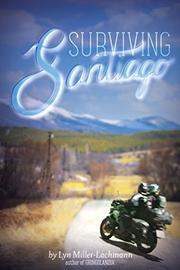
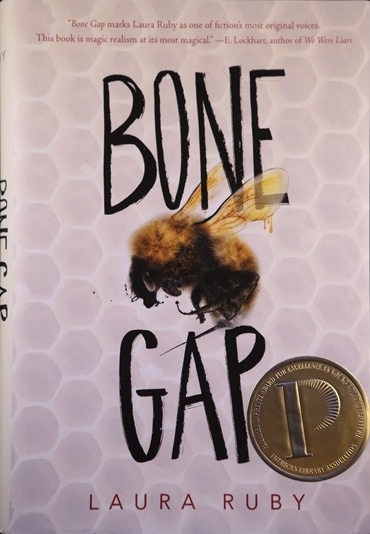
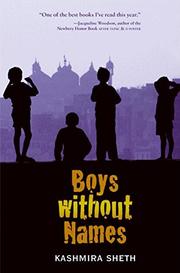
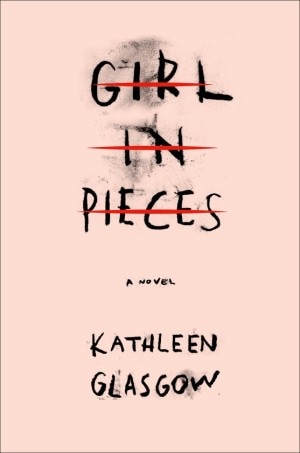
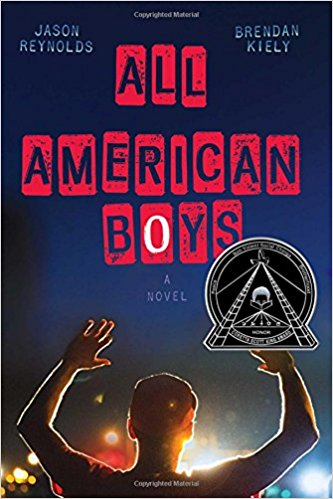
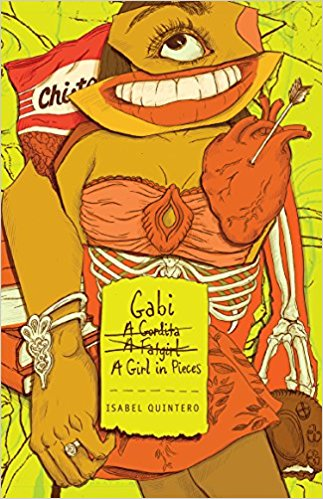
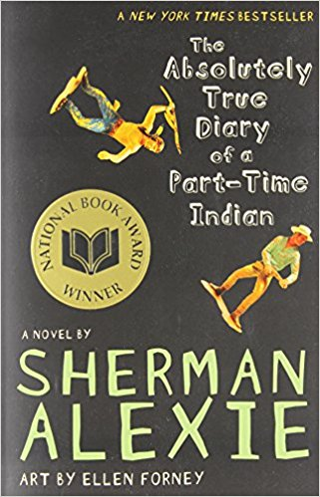
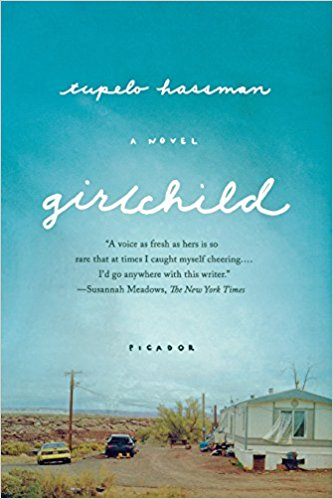
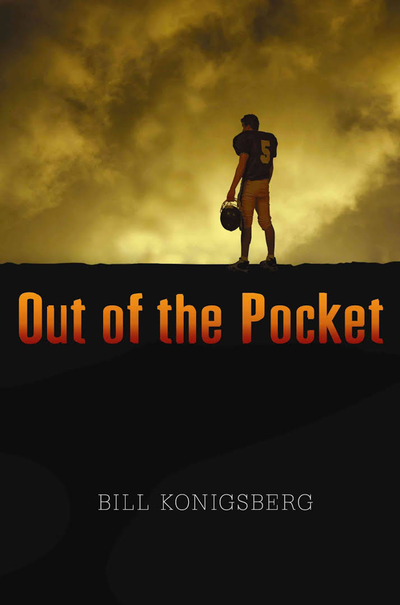

 RSS Feed
RSS Feed